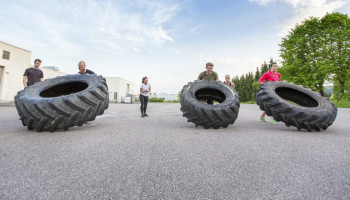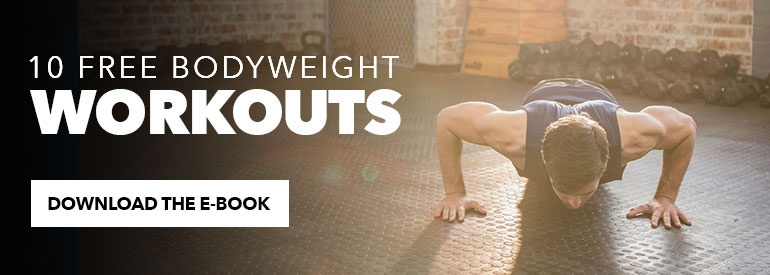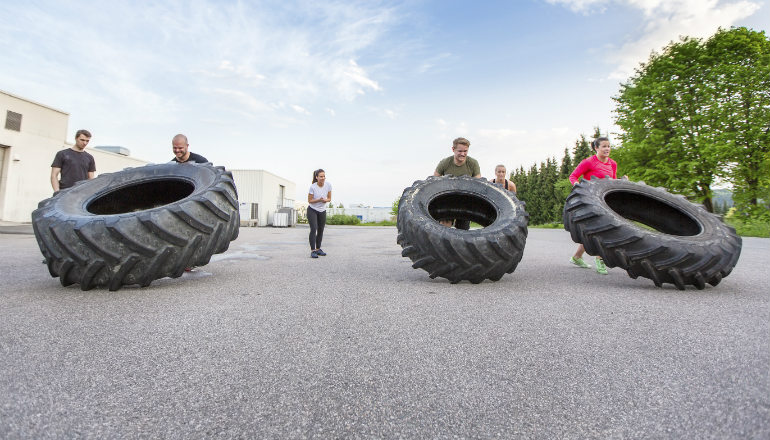 Reading Time: 10 minutes
Reading Time: 10 minutesI recently went to a brand-new supermarket that opened by us. I had on a pullover branded with my business name, “MH Performance and Nutrition.” We had guests staying with us, so I was buying a few items for a cookout. While my shirt boasted that I was a nutrition guy, I carried a basket of bacon, beer, chips, eggs, and a few different guacamole dips. The beer was dark, and I also had a few peaches, so I don’t see a problem with it. Super healthy.
I’m pretty sure the cashier got the hint that I wasn’t the lettuce wrap kind of guy. Not there is anything wrong with lettuce wraps. She looked at me and asked, “What do I need to take after a bike ride to build muscle?” I told her beer, bacon, and lifting weights would be best.
Kidding aside, her question needs to be broken out into a few different parts to be answered properly. She was really asking what supplement would magically help grow muscles. To answer this, we need to explore the pros and cons of gaining muscle, overall diet and protein content, type of training to maximize muscle gain, and if there is any room for supplements.
More importantly, we need to explore why we should try to gain muscle. Is it just for bodybuilders, or do we all need to utilize some of these concepts?
The truth is — for those of us north of thirty years of age, we can’t afford not to do these things.
The Drawbacks of Gaining Muscle
Many of us begin a quest for more muscle to look better and more “toned,” raise our metabolism, help with fat loss, and to enhance our sport ability. While these reasons all have some truth, gaining muscle does have potential drawbacks.
My cashier friend wanted to know how to gain muscle after biking. If she is a serious cyclist, gaining muscle may add too much weight and size to help her sport. There is a reason distance runners and cyclists aren’t full of muscle. It comes down to economy, and it’s best if they only build enough muscle to accomplish the task at hand. On the flip side, sprinters can use muscle for the burst of speed, and they aren’t running long enough for the extra weight to become a burden. As a hiker, skier, and golfer, having excess muscle can get in my way. (At least, that’s my excuse for not looking like Thor.)
Another potential drawback is price. This is something most people overlook. The times in my life where I went after muscle growth, my grocery bill also went up about $150 per month. To gain muscle, you need to eat more. Trying to do it with quality foods — like responsible meat and seafood, fruits, vegetables, and nuts — can get expensive and time consuming.
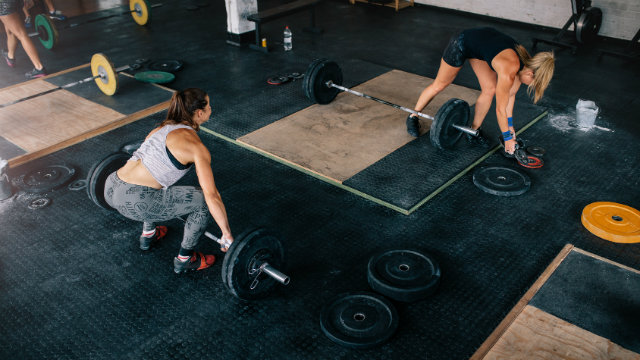
The Benefits of Gaining Muscle
Drawbacks aside, most of us should have some focus on muscle building, because as we age, a fight begins in our bodies. Left alone, we tend to lose muscle mass with each passing decade after we turn thirty. Whatever your sport or passion is, the sport of life does require us to do some things to gain or maintain muscle mass if we wish to age gracefully.
Besides aging, trying to gain muscle can help with fat loss. (Unfortunately, fat doesn’t turn into muscle. It doesn’t hurt to try, though.) To lose weight, you must be in a calorie deficit. You must be burning more than you are taking in. I’ll fight anyone who disagrees. Not a physical fight, but maybe like a scientific freestyle-rap battle. If you are taking in less than you burn, you’ll lose weight. End of story.
But “weight loss” and “fat loss” are two different things. If we do some bodybuilding and also go into a calorie deficit, we can ensure that we lose mostly fat and very little muscle mass. We give our muscle tissue a life boat and flood the fat out. Without adequate protein and weight lifting, going into a negative calorie balance will cause some of the weight loss to be muscle tissue. But we want that strong, lean look with weight loss.
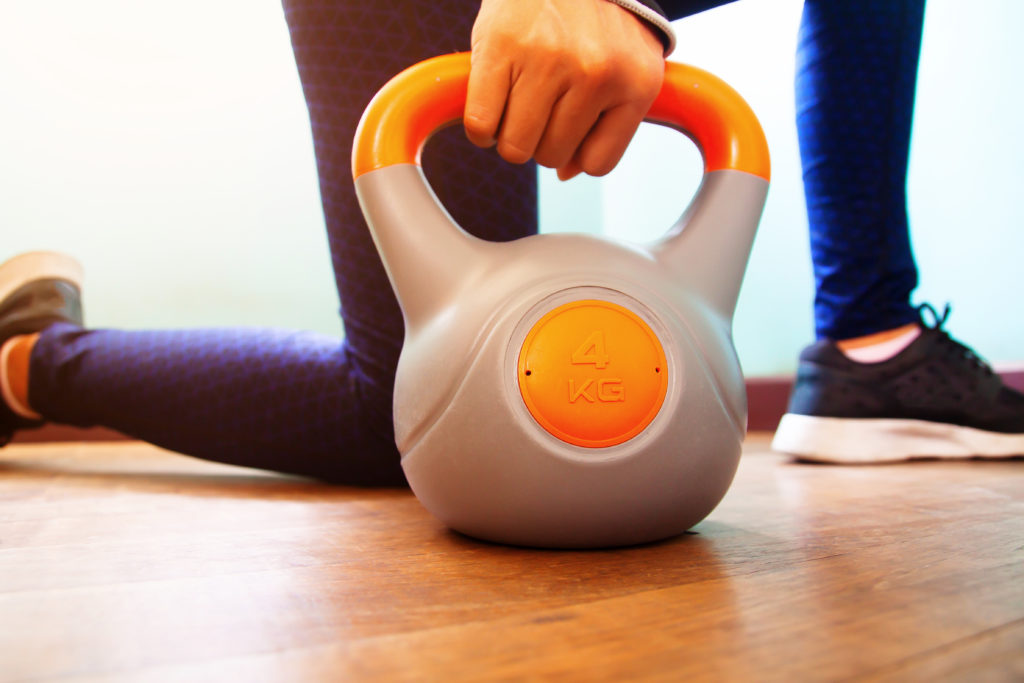
Which brings me to my final point. A common saying is “muscle weighs more than fat.” It’s actually not true. A one-pound piece of each is, well, one pound each. The saying really refers to the fact that muscle is denser than fat. Meaning that if each tissue weighed one pound, the muscle would take up less space than fat. So building or maintaining our muscle mass helps not just with aging, but also with fitting in our clothes better.
Given all that, fighting for our muscle should be the focal point for most of us.
Here is a quick summary on the reasons for gaining muscle:
- You should be careful with adding too much muscle if you are in a specific sport. Some examples are hiking, endurance sports, golf, and tennis. We don’t see bodybuilders playing soccer (although it would be awesome).
- Aging and weight loss demand that we fight to maintain or even gain some muscle.
- Most of us can’t gain that much muscle without serious training and enhancements, so using some bodybuilding techniques is a good thing without many drawbacks.
- The scale can be misleading. Gaining muscle mass can help you get the look you desire and help you do the things you love into an older age.
So, How Do We Gain Muscle?
Let’s start with overall diet. The most important factors are calories and protein. I’m not asking that you count protein or calories all the time. However, it’s important to know how each variable works.
- Adequate protein intake + resistance training + small calorie surplus= muscle gain
- Adequate protein intake + resistance training + small calorie deficit=weight loss with maximum muscle retention
How to Determine Adequate Protein
Do we need to guzzle down protein shakes and eat a plate of chicken breasts? No, but getting enough protein does require some planning and learning.
Figure about .6 to .8 grams of protein per pound of your bodyweight. So, if you weigh 180 pounds, that comes out to 108 to 144 grams of protein per day. I’m not a math guy, so let’s keep it simple and say you want at least 100 grams of protein per day and probably a bit more. Just take your weight, multiply it by .6 and .8, and give yourself a rough range. Let’s take a 150-pound persona as another example. 150 x .6= 90. 150 x.8=120. So this person would want to eat around 100g of protein each day and will err on the side of more.
The numbers are nice, but what does this look like with food?
- 3oz chicken breast: 25g protein
- 1 cup of cooked lentils: 18g protein
- 5oz salmon filet: 30g protein
- 1 cup cooked quinoa: 8g protein
- 5oz Greek yogurt: 15g protein
This comes out to 96g of protein. Vegetables, starches, fruits, and all the other things you eat in a day have smaller amounts of protein. So, getting close with the high-protein foods means you’ll probably be right on target. Remember that 3oz of chicken isn’t a big serving size and humans are notorious for serving ourselves bigger portions than we think.
How to Determine Proper Calories
There are a lot of formulas out there to estimate calories. I never use them. There are error rates as with any estimate, and you would have to measure everything perfectly to avoid further errors in calculations. It’s too much to think about.
Here’s all you need to know:
- If you stay the same weight for weeks, you are in a calorie balance.
- If you keep gaining weight for weeks, you are in a surplus.
- As I’m sure you can guess, losing weight means a calorie deficit.
Sounds really simple, and it is. However, in almost all of my articles, presentations, and consults, I also stress the need for a meal structure.
Making a habit of the same eating times each day will help you decide where to cut or add, depending on what you want to change. If you graze and go rogue all day, we have no place to start from. Once you have a structure, you can look more easily assess where portions can be added or taken away.
So, let’s take a moment here to summarize a few things:
- Count the things you can have versus what you cannot, so track protein numbers for a week to get an idea of how much protein you should be having.
- Use .6 and .8 times your body weight to get a protein range. Weight x.6=x and Weight x.8=y
- Get yourself eating at the same times each day to help assess your calorie balance
How to Start Resistance Training
Bodybuilders know how to gain muscle. But you don’t have to be in the gym for hours, wear cutoff shirts, and have a really cool grunt every time you lift a weight to benefit from some of the principles.
Volume builds muscle. So, do 10-20 reps for 3 sets of all the major muscle groups. Learn proper technique from a coach, and don’t be afraid to go past those five-pound dumbbells. With proper progression and instruction, you’ll be amazed with how strong you can get.
A few times a week is probably enough to add a bit of muscle. It’s not my place here to give you a full routine, there are plenty out there. However, figure on lifting a few times a week, for 30 to 60 minutes, and hitting the big muscle groups: chest, back, shoulders, arms, core, and legs. Nobody likes leg day, but it’s probably the biggest one you shouldn’t skip.
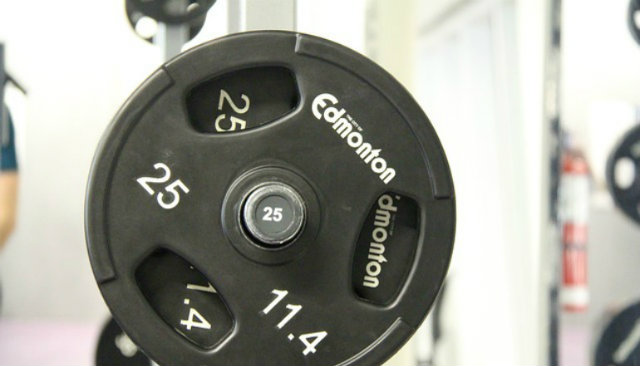
Now, About That Original Question
If you hit the minimum lifting requirements, get adequate protein, and are in a calorie surplus, you’ll gain muscle. If you hit the above, but are in a calorie deficit, you’ll lose fat with minimal muscle loss.
Now, the original question from my supermarket friend was, “What should I take to gain muscle after biking?” She was asking about supplements and was implying a timing issue. Right after exercise, what to take. Here is the truth:
- If you have adequate protein in your daily diet, you don’t need a supplement.
- If you have adequate protein in your daily diet, you don’t need to worry about timing.
We used to think that if you worked out and didn’t replenish with carbs and protein within an hour, somehow the muscle thief would come around and steal all your muscle. This simply isn’t true. Timing is such a small thing to worry about for very little benefit, so it’s best to focus your efforts on overall diet.
As for supplements, I use them sparingly. I’ll have people use a protein powder if we are doing shakes as a meal replacement. Breakfast is a common one for this, especially for those with limited time and wanting something light in the morning. A shake with fruit, yogurt, oats, peanut butter, or countless other combinations can benefit from an added protein shot. However, this is really the only time it can be very useful. Just adding protein powder to water and sipping isn’t a great economical return given the little benefit. It also has you missing an opportunity to have more balanced foods that will return more vitamins and minerals.
Work on the 99%, which is getting high-protein foods, the right amount of food, and lifting weights. The 1%, like supplements, can be dealt with at another time, if you even need to do something with them (hint: most of us don’t).
The Bottom Line on Gaining Muscle
Gaining muscle is tough. But it’s a worthy journey for those of us who want to age strong and live long. You can feel and look better, but fighting muscle loss can literally save your life.
It’s a simple fact that we tend to lose muscle mass as we age. If we can at least maintain what we have through the years, it will help prevent becoming frail. Because once that happens, we move less, stop doing the things we love, and gradually decline. Start planning for this fight now.
Don’t get caught up in the hype of supplements, timing, or expensive programs. Get the basics down. Educate yourself on what type of foods to eat, how much to eat, and how to lift. Then go do it.
